Only in comparison it is possible to understand which is better, the same rule applies to cars. In this article, we will compare two crossovers of Japanese origin. Why are Toyota and Mazda compared so often? The answer is simple, everything is connected with the fact that the pricing of cars for the two companies will be approximately the same, so if the manufacturers produce cars of the same class, then why not compare them.
Toyota and Mazda are longtime favorites of Russians
Configuration and prices of Mazda CX 5 and Toyota Rav4
First, let's talk about the equipment of the car. Immediately striking is the fact that Toyota supplies only two types of engines to our market on its SUV. The first of them is a two-liter gasoline unit for 146 forces, and a 2.5-liter gasoline unit for 180 forces too. Unfortunately, diesel versions are not available in Russia. But the Mazda company is ready to offer its customers a little more.
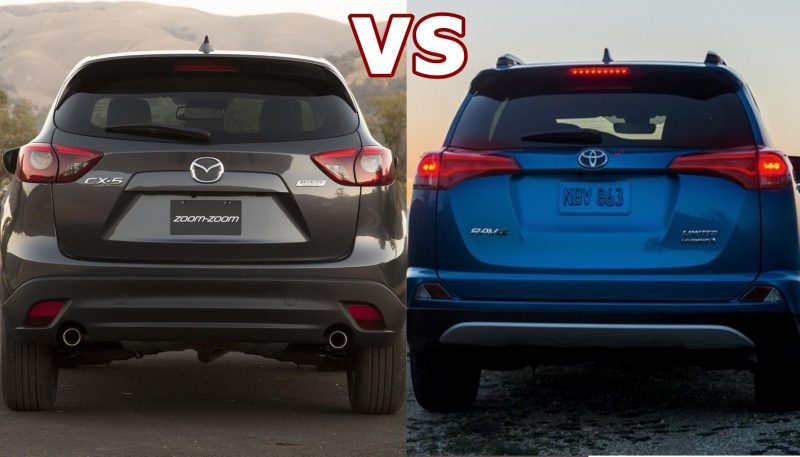
More specifically, versions with gasoline engines are available for sale, one with a volume of 2 liters, the second with 2.5. It is worth noting that the gasoline versions of Mazda's engines are slightly more powerful compared to competitors. Also Japanese car brand also supplies one diesel engine with a volume of 2.2 liters, producing 175 hp. So, at least on the choice of engines, Mazda clearly wins.
However, in terms of technical and electronic equipment, Toyota immediately takes the lead. Rav4 are equipped with xenon optics, and cars also have an electronic clutch lock, which transfers torque to the rear axle, and has the ability to completely disable stabilization.
The price for Rav4 starts at 1,459,000 rubles, which is actually a lot. But the prices for the CX-5 start at 1,349,000 rubles. In both cases, the cars will be equipped with two-liter engines and mechanical boxes gear.
Appearance
When it comes to appearance Toyota rav4 2016, earlier the design of this model was positioned as a women's SUV. Because of this, many were skeptical of the model throughout the life of the crossover. However, today Toyota designers have decided to fix this problem. They tried to add stricter shapes and lines to the car. This work was done with the aim of attracting a male audience, but the exterior of the car turned out to be quite controversial. Perhaps the designers have stretched the front of the car too much, namely the bumper, which makes it seem that the headlights are too set.
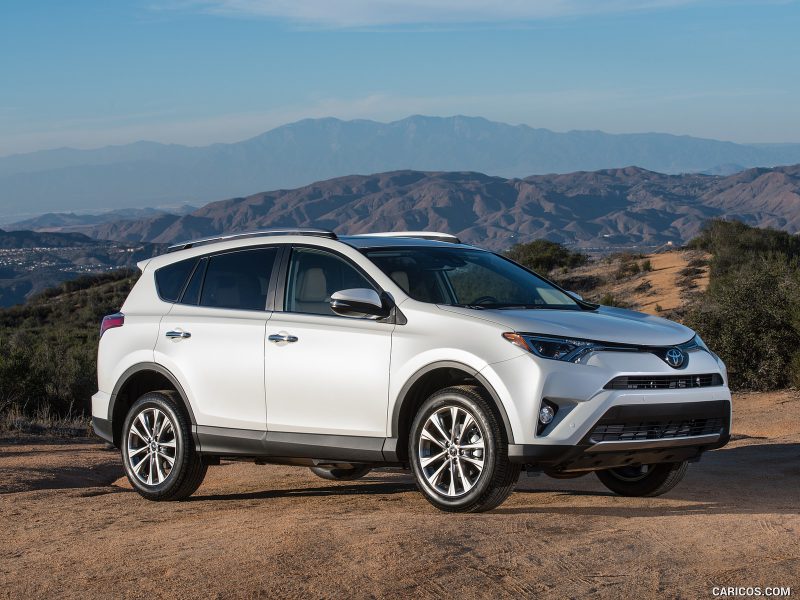
As for the design of Mazda, it can be noted that it was the CX-5 that became the first car of the company, which embodied the new design philosophy. From the very first glance at this SUV, you can see more aggressive body lines from which one gets the impression that the car not only looks brighter and more expressive, but also more "driving". What is just one squint of headlights? However, there is one drawback, due to its rapid shape, the car seems smaller and lower in comparison with the competitor.
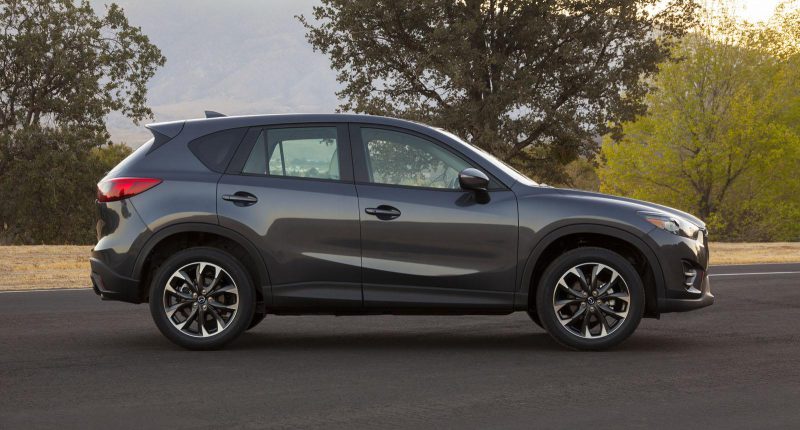
Summing up the appearance, one can say one thing, the Mazda car has a brighter appearance. It is more suitable for a young man, while the buyer will receive a stylish design and all the same possibilities in terms of spaciousness. Rav4, in turn, is more suitable for calm drivers who value the comfort and spaciousness of the car.
Salon Mazda cx 5 2016 and Toyota rav4 2016
Car interiors are fundamentally unlearning. Mazda has a more laconic interior design, without unnecessary details and shapes. However, the layout of the front panel itself is very similar to the decision of the German company, namely BMW. The multimedia screen in Mazda is slightly recessed into the torpedo itself, which protects it from glare, the interface itself is quite clear, but today it is slightly outdated.
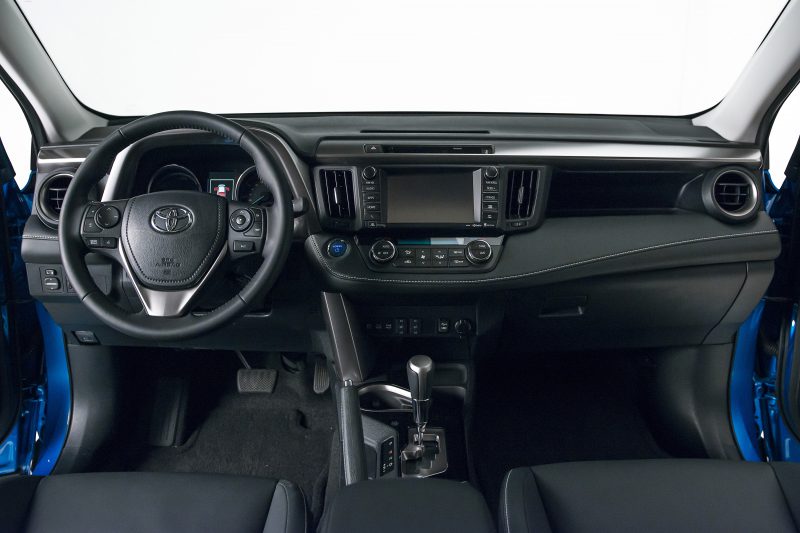
Rav4 is a completely different story. The designers decided to install an angular front panel, which gives the impression of massiveness and reliability. However, no matter how bold the decision in the design of the panel itself, there are some details that clearly lack quality. For example, the entire torpedo is made of hard plastic, and the quality of the buttons and other parts of the front part leaves much to be desired.
The design of the instruments in the Rav4 looks weak, it seems that the design was borrowed from a budget car of a lower class. And at Mazda, the design of the dashboard is much more interesting and looks in step with the times.
The driving position in cars is also strikingly different. In Rav4, the seats are provided not only for the lean configuration of the driver and passengers, but also for the larger type of people, which is why Toyota is better suited in terms of comfort for more mature people. In the CX-5, the interior and seats are more compact, the seats have more pronounced lateral support. Therefore, this choice is suitable for young people or middle-aged people.
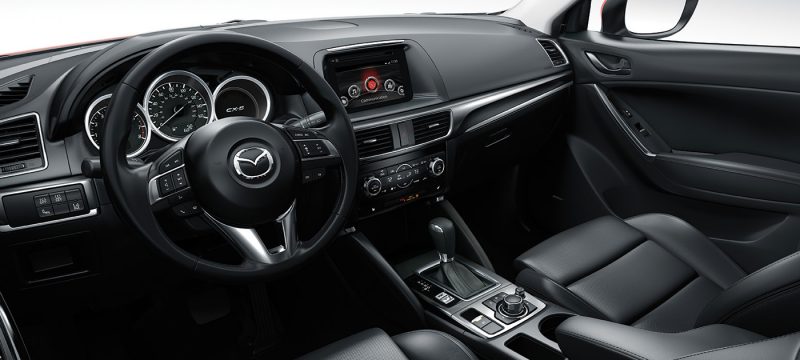
From the point of view of ergonomics, Toyota wins here again, the designers have placed more different shelves and cases for various items. Mazda, in turn, is more modest in this matter.
If you move to the back row, you can immediately notice that due to the fact that the Rav-4 has doors bigger size, the back landing will be more comfortable. Also, the rear row of Toyota has a lot of space compared to Mazda.
Driving and test drives
If you compare both cars in motion, the driver will immediately notice the difference in the ideologies of the cars. Mazda will be faster and more dynamic, while its fuel consumption will also be modest. The car feels very confident in urban conditions and is always ready for active driving. The suspension works perfectly, the car itself is less roll when cornering, which is why it has more precise control. Also informative will be not only the gas pedal, but also the brakes along with the steering wheel. What the car lacks in the case of the version with an automatic transmission is the paddle shifters, which would add more emotion to the driver in active driving mode.
Toyota, in turn, is a little heavy, in the dynamics of acceleration up to 60 km per hour the difference compared to the CX-5 will not be noticeable, but if we talk about higher speeds, then the car in this case picks up speed very lazily. The passage of a turn is accompanied by rolls, from which the speed on such turns will be lower. But this is all only in urban conditions. If you go on light off-road, then the Rav4 will look more solid than the competitor. Toyota's off-road potential is much higher than that of Mazda, so overcoming any obstacles will be easier to get through on Rav4
Comparison results
It is impossible to name any of the two presented cars better or worse. The manufacturers of these crossovers approached the issue of creating their cars from completely different positions. On the one hand, Mazda seems much more attractive and dynamic, on the other hand, the Rav4 is more spacious, roomy and has off-road potential. And that is why the target audience of the two SUVs will be different. In the case of the CX-5, its customers will definitely be young people who value style and driving emotions. And the buyers of Toyota will be family people above the middle age, who primarily value practicality in use.
The whole world has long known how to impress others by costing " with little blood"- for money they sew labels of famous brands on clothes, remove the designation of the volume of the motor and equipment from base cars and also buy goods that only look expensive and solid. Are crossovers really such, the most famous representatives of which are Honda cr-v and Toyota RAV4? After all, cars are equipped with powerful engines with a large displacement, and also have a far from low cost - however, despite their brutal appearance, they are not positioned by manufacturers. What are they - an imitation of high cross-country vehicles or simply improved towards greater practicality cars, will show the comparison of RAV4 versus SRV.
Modern powerful crossovers - Honda CR-V and Toyota RAV4
In different road conditions
Dirty competition
If you look at the outside of the Toyota RAV4, you would think that we are facing a slightly smaller version - the similarity is especially noticeable when viewed in profile. In addition, a ground clearance of almost 200 mm and a lock button center differential instill confidence that the RAV4 can overcome the toughest hurdles modern crossovers can handle. However, in practice, everything turns out to be much more complicated - it easily enters into a deep puddle on a primer, reaches the middle and begins to get stuck. The natural reaction of a driver with experience in off-road driving is to smoothly but actively increase the fuel supply to prevent the car from stopping and finally getting stuck. For Toyota, such an action would be a big mistake - the electronics, which do not have an “off-road” algorithm of operation, detects slipping and concludes that the car is on an icy road - the result is a sharp decrease in the RAV4 engine speed, as a result of which the car stalls.
It's time to call the tractor driver - however, even after such an embarrassment, I want to give Toyota RAV4 another chance to justify itself and defend honor. The vehicle will now drive over rough terrain, teeming with deep ditches and steep hillsides. And again we have to stop the test - the low-hanging bumpers of the RAV4 start to abut threateningly against the ground, which speaks of large material costs if the movement continues in this mode. The third and last chance relates to checking the Toyota RAV4 center differential lock - indeed, on a soggy primer, the car starts to move much more confidently. But all the enthusiasm received by the RAV4 as a result of pressing the button is enough for 10-15 minutes, after which the electronics turns off the overheated clutch, and again you have to call the tractor driver who is already completely tired of the side work.
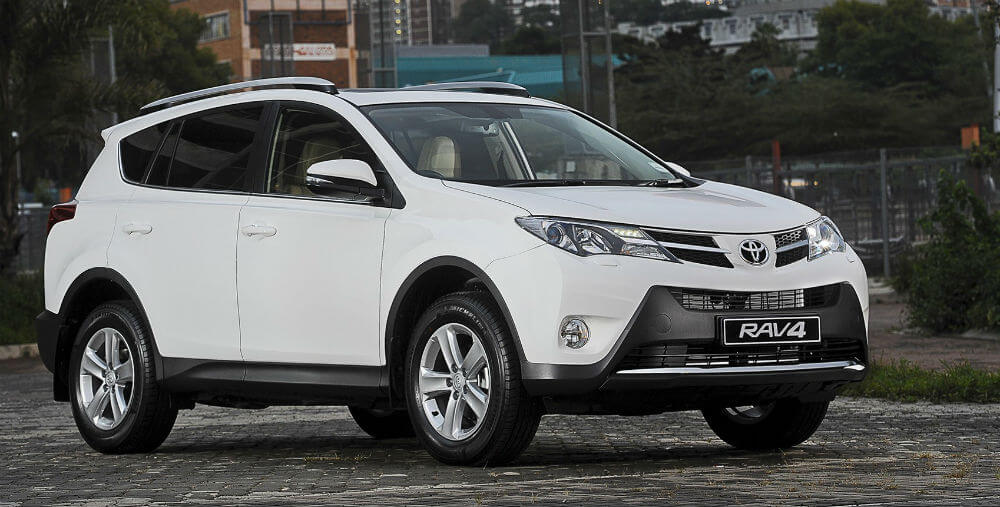
If we talk about who has a more advanced all-wheel drive system - SRV or RAV4, then the disputes will be absolutely useless, because both Vehicle but have a transmission based on the use of an electronically controlled multi-plate clutch. However, how can we not recall the recent scandal when the technical specialists of the Swedish automobile publication found that four-wheel drive half the time ... just doesn't work! Let's check if this is so - the Honda CR-V plunges briskly enough into a puddle, and stops at about the same place as the Toyota RAV4. At the same time, the problem cannot be attributed to the intervention of the stabilization system - for a high-speed Honda engine, it works much later. The reason is a completely different drawback - the ground clearance of the Honda CR-V is only 187 mm, and some elements of the chassis are located slightly lower, which leads to a quick and irrevocable crossover getting stuck in thick mud.
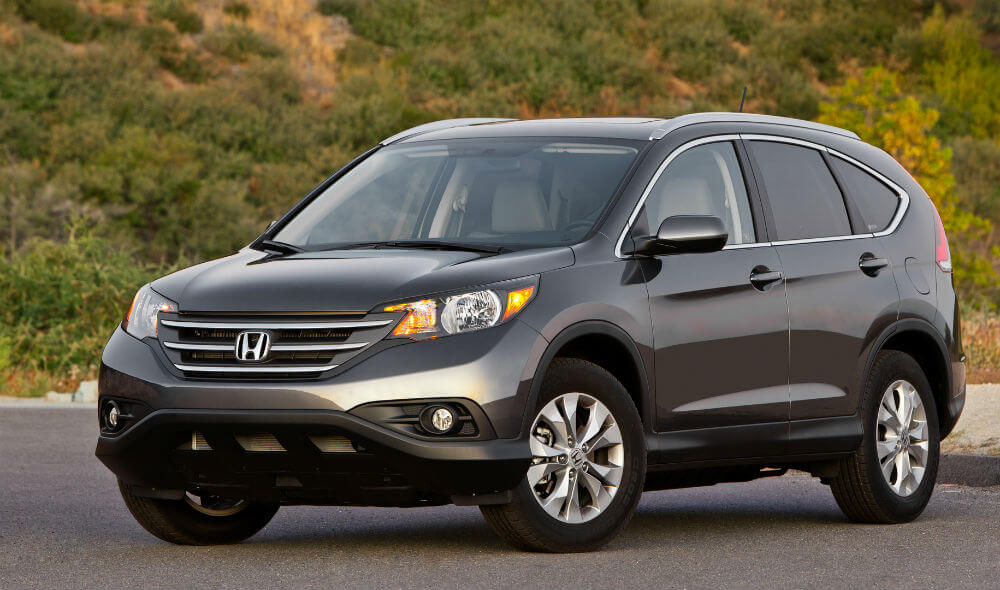
Despite the fact that a strip of unpainted plastic runs along the perimeter of the lower part of the body of the Honda CR-V, imitating off-road protection, it really does not carry any functional load - the plastic body kit goes down very low and significantly worsens the angles of entry and exit even in comparison with such a crossover as Toyota RAV4. In addition, there is no center differential lock on the CR-V at all. What can I say - after 5 minutes of active movement on a dirt road, heavily moistened by yesterday's rain, Honda stops as a result of overheating of the clutch. It seems that this problem is a typical "disease", but the Honda CR-V gives up before the rest. The final verdict is only asphalt and only good ones road conditions, and the maximum feat for the CR-V should be leaving the snowy yard.
We return to the asphalt
Now it's worth checking how the cars behave in their native environment, that is, on a good road with high-quality coverage and all the necessary amenities, such as marking and fencing applied on time. Toyota RAV4 is perceived as a real "king of the road" - the high seating position allows you to look into the windows not only, but also by route taxi... At the same time, no discomfort associated with an increased center of gravity and a large mass of the car is felt at all in the city and on suburban areas. On the asphalt broken by long-term operation, the Toyota RAV4 behaves quite ambiguously - the positive is that the car confidently goes through any irregularities, without notifying about it with the booming blows of passengers, and among the minuses one can name an extremely unpleasant swing of the steering wheel.
Test Drive Toyota car RAV4:
If at Toyota the "automatic" is one of the most important components of success, then at the Honda CR-V it is the "root of evil". Of course, this five-speed unit is constantly undergoing minor modifications and changes in settings, but its design has become outdated for a long time, which forces us to put up with long switching delays, as well as an inadequate choice of the current gear ratio. Largely because of the powertrain, the Honda CR-V loses out to the RAV4 in comparison areas such as efficiency and dynamics. Possibly CR-V with mechanical transmission will turn out to be a little more balanced, but in our country such cars are not used.
| Car model: | Toyota RAV4 | Honda cr-v |
| Manufacturer country: | Japan | Japan |
| Body type: | Crossover | Crossover |
| Number of places: | 5 | 5 |
| Number of doors: | 5 | 5 |
| Engine displacement, cubic meters cm: | 2494 | 2354 |
| Power, hp with. / about. min .: | 180/6000 | 190/7000 |
| Maximum speed, km / h: | 180 | 184 |
| Acceleration to 100 km / h, s: | 9,4 | 10,7 |
| Type of drive: | Full | Full |
| Checkpoint: | 6 automatic transmission | 5 automatic transmission |
| Fuel type: | Gasoline AI-95 | Gasoline AI-95 |
| Consumption per 100 km: | In the city 11.4 / Outside the city 8.5 | In the city 11.9 / Outside the city 8.4 |
| Length, mm: | 4570 | 4571 |
| Width, mm: | 1845 | 1820 |
| Height, mm: | 1660 | 1685 |
| Clearance, mm: | 197 | 187 |
| Tire size: | 225/65 R17 | 225/60 R18 |
| Curb weight, kg: | 1610 | 1608 |
| Full weight, kg: | 2080 | 2055 |
| Fuel tank volume: | 60 | 58 |

Practicality
Design controversy aside, let's move directly to the consideration of vehicle capacity, which is a very important characteristic for crossovers. In Russia, Toyota RAV4s are sold only with a full-size spare wheel - this limits the volume of the luggage compartment with the rear sofa folded out to 500 liters. However, if you do not use the rear seats Toyota, the capacity can be increased to a decent 1.6 cubic meters. Passengers do not complain about the cramped space - even people with a fairly large build feel free in the RAV4, which is due to the large margin of space in width, height and distance to the front seats.
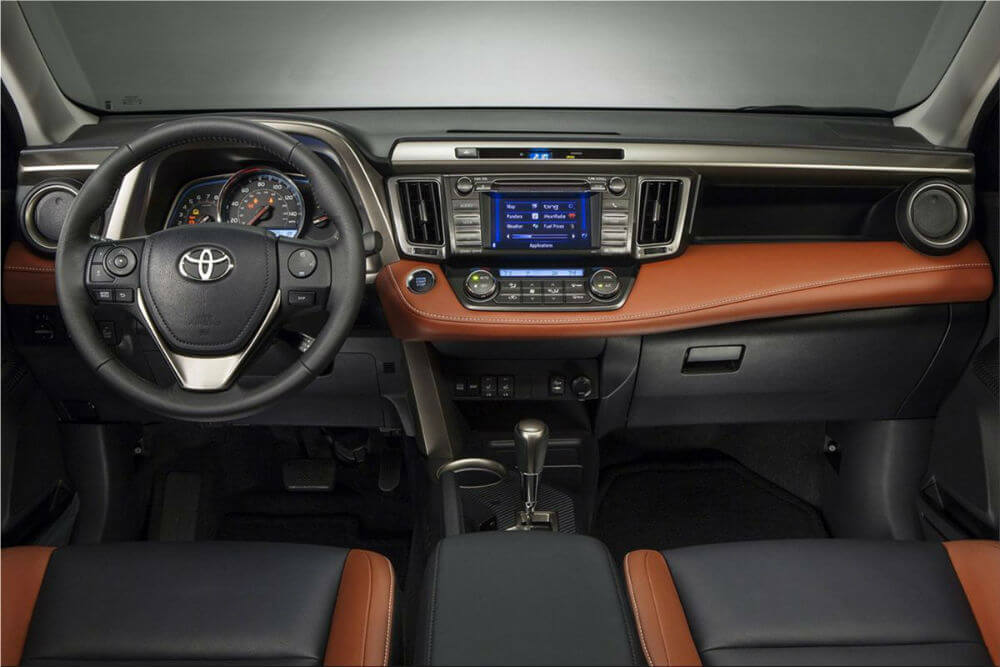

Arranging a comparison of the RAV4 against the Honda SRV, at first you think that the last crossover will win, since in its normal state it has a volume of 580 liters. However, if the seats are folded down, the figure rises to ... 1.1 cubic meters! This small increase was due to the fact that Honda was thinking about trucking last - the priority for the CR-V was dynamics. This is evidenced by the small rear sofa of the Honda CR-V, on which three people can fit only on condition that they are ready to endure the tightness and knees of the front seats.
Asphalt cruisers
If the title Land cruiser translated as "Land Cruiser", then these crossovers would like to be called asphalt cruisers. Large Toyota dimensions RAV4 and Honda CR-V make both cars practical and roomy, but they don't give them the right to be called SUVs at all. This is especially true of the Honda CR-V, the element of which is fast movement on international highways. Toyota RAV4 is more pleasant to drive in many respects, but do not forget about the presence of certain nuances associated with a large mass and a moderately soft chassis.
The best prices and conditions for the purchase of new cars
Credit 4.5% / Installment / Trade-in / 95% of approvals / Gifts in the salonMas Motors
Today we will present another crossover review and find out which is better: Toyota Rav 4 or Mitsubishi Outlander. Both models have long been on the market and have won many fans. The first Outlander appeared in 2001. Toyota started much earlier - its crossover saw the light of day already in 1994. But will the company 's years of experience in production help the company to put the rival on its blades? Or will a young competitor move a classmate, proving that Toyota has run out of ideas? Let's figure it out!
Appearance
Before proceeding with the review of cars, it is worth noting that in 2016, when restyled versions of both flagships came out, the companies went a long and not always successful path to Olympus. At the moment, Toyota has an updated version of the 4th generation of the crossover, and the opponent has a restyling of the 3rd generation. The launch of both versions took place at about the same time - 2012-2013. And both models received criticism, both in terms of appearance and technical equipment.
The appearance of the previous versions of both cars was received controversially. Outlander seemed too angular and insipid. There was nothing eye-catching about him. Have Toyota Rav4 the body came out more modern, but the developers went too far, making the car too feminine.
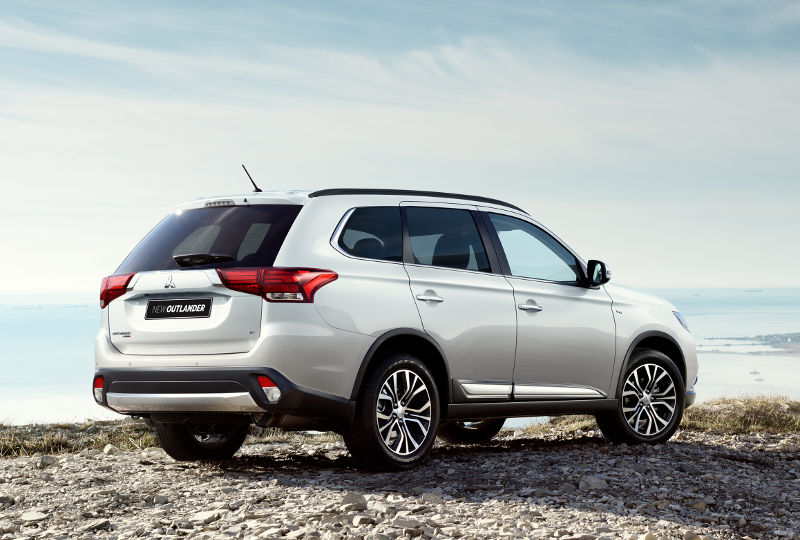
Restyling of 2015 at Mitsubishi and updated Toyota 2016 were able to rectify the situation. The first has got numerous inserts and chrome elements that bring modernity and courage, and the second has added aggression in its appearance so that it does not seem so feminine.
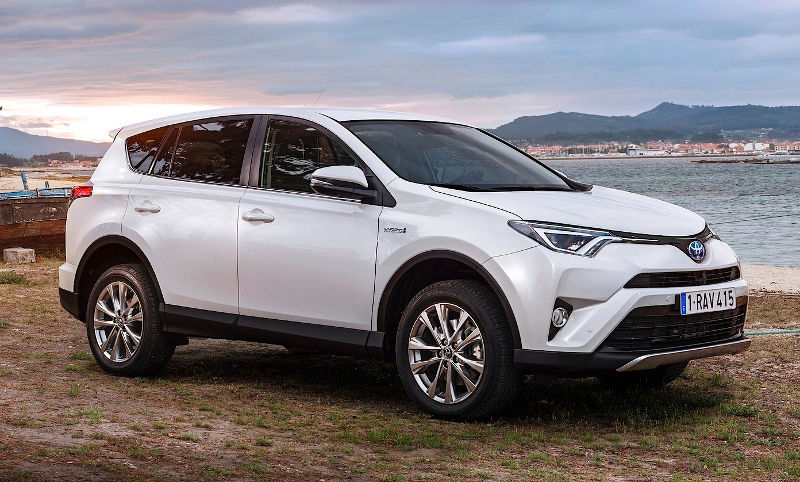
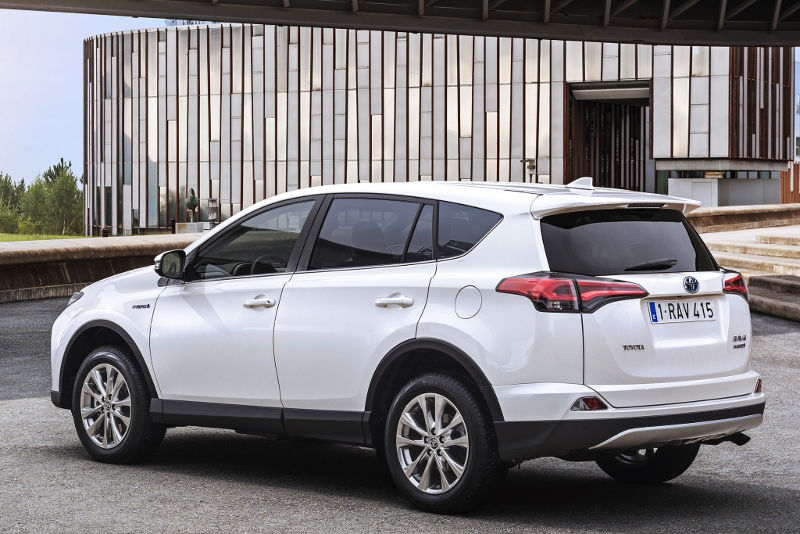
Looking at updated versions body, each crossover can be put for the design "five". The developers have pulled their offspring to a new level, providing them with serious competitiveness.
Salon
General impression
With the spaciousness of passenger seats in both cars, complete order.
Toyota Rav4 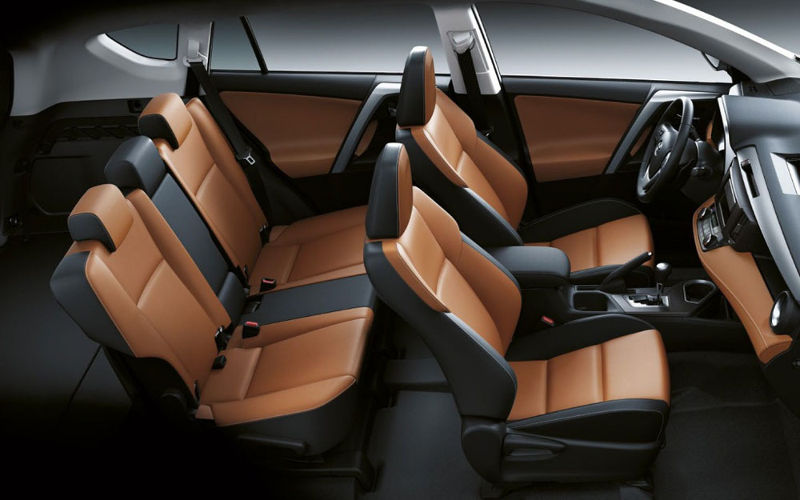
In Rav 4, the lateral support is slightly better. But if we talk about the front seats, then it is more suitable for drivers of a strong physique. Skinny people without winter clothes will not be very comfortable in them. Incidentally, this is a distinctive feature of the first row seats in all Toyota cars of recent years - they are aimed at a wider audience.
The downside to the Outlander is the lack of options in the second row. There are no heated seats, no power outlets for charging devices.

The competitor has both. Moreover, heating rear seats is available in all trim levels, except for the basic version.
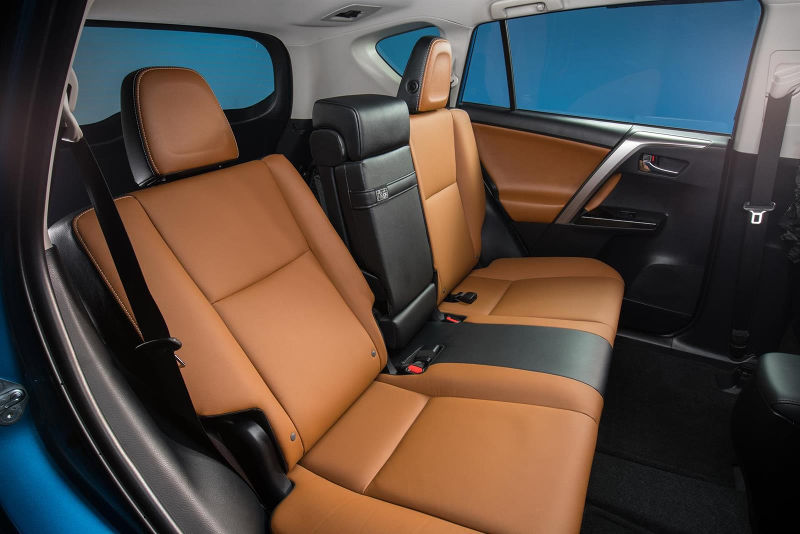
In both crossovers, the backrests of the rear sofa are lowered in height. But the advantage of Rav4 is that the backrest angle control mechanism is located on the side of the seat, and in Mitsubishi you need to feel the lever behind your head, which is very inconvenient. Although such a warm-up will be an excellent prevention of chondrosis.
Quality of materials
Now about the interior. The Mitsubishi Outlander finish looks good, but old-fashioned. It is based on soft plastic, which is pleasant to the touch and pleasing to the eye. But design as a whole lacks modernity. The dashboard is slightly less readable than in Toyota. The opponent's interior design looks more modern, but there are flaws in ergonomics and choice of materials.
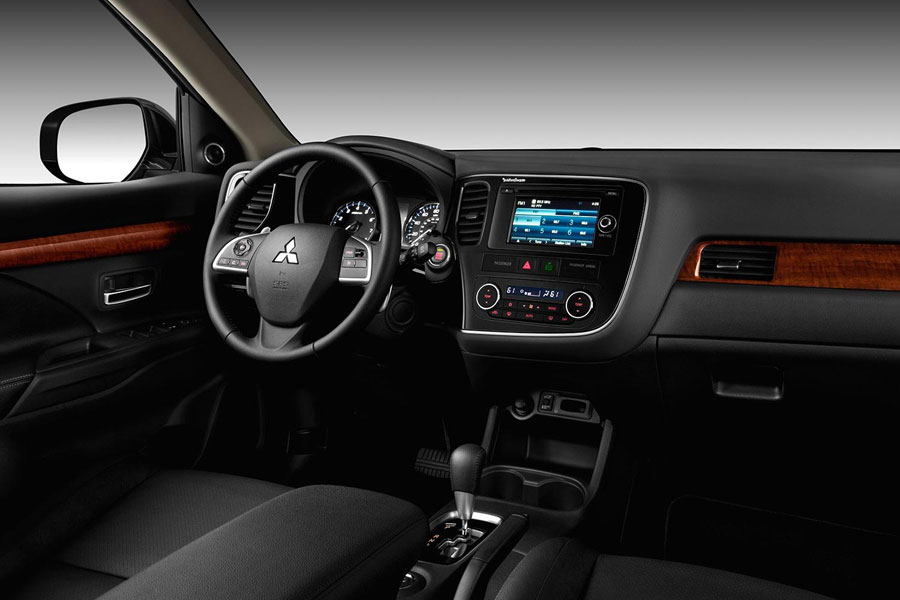
The feeling that the designers were collecting the remains of all materials for decoration and inserted into this car... There is leather, soft plastic, and hard plastic. However, it doesn't look harmonious. Although considering the interior is always a matter of taste, and some car owners may like this combination.
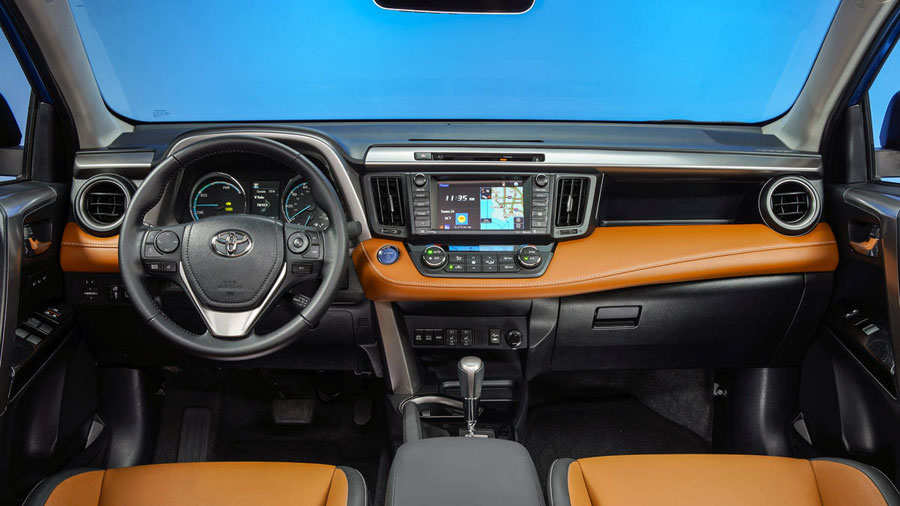
But problems with ergonomics are something that no car enthusiast will deny. The main disadvantage of the Rav4 is the location of the buttons on the center console. It is made in a peculiar way, and in order to control some options, for example, heated seats, the driver has to bend over to consider the position of the keys and their correct pressing. This makes you very distracted from the road and creates a hazard while driving.
Trunk
Let's talk about luggage compartment... If we compare the maximum configuration with 2.4 liter engines. from Mitsubishi Outlander and 2.5 liters. Toyota Rav 4, Rafik confidently wins this round. Its useful boot volume is 577 liters. against 477 liters.
Toyota Rav4 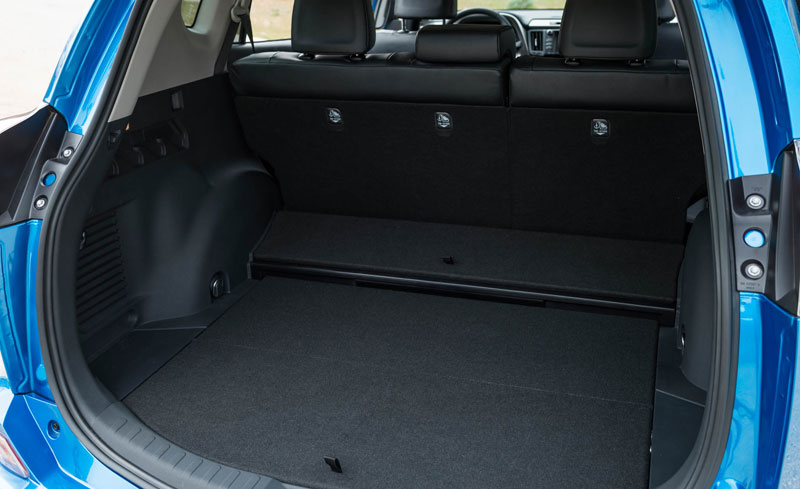
Mitsubishi outlander 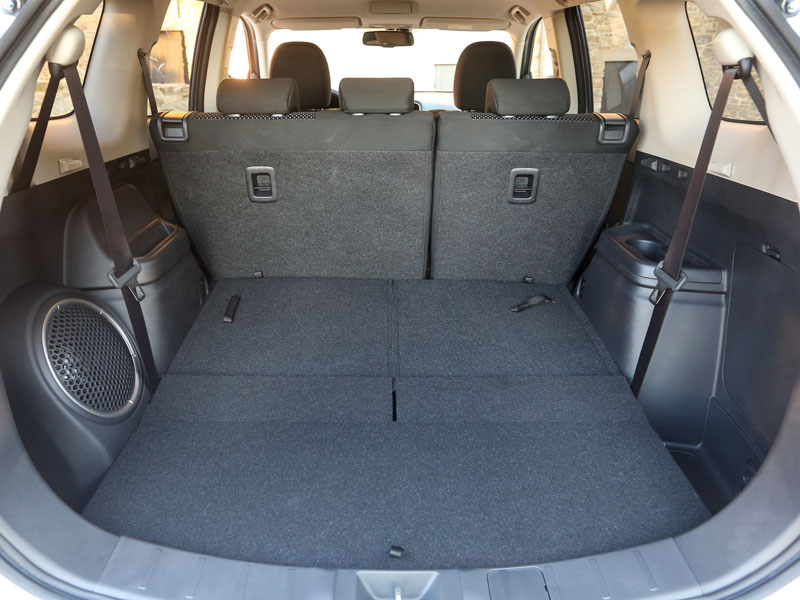
Such a colossal difference of 100 liters is due to the fact that under the luggage compartment platform in the Rav4 there is a stowaway. And in all the opponent's trim levels, a full-size wheel is installed. True, it is not in the trunk, but under the bottom, which creates a number of inconveniences when replacing. But it is worth lowering the second row of seats, and the volume of the trunk becomes larger in Mitsubishi - 1640 liters. against 1605 liters. from Toyota.
Mitsubishi outlander ![]()
Toyota Rav4 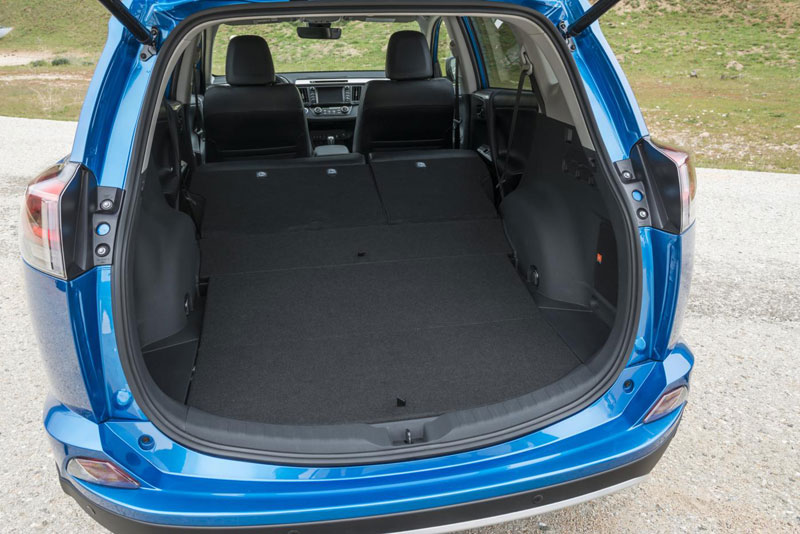
And if we take the Outlander model with a 2-liter engine in comparison, the situation for the Rav 4 becomes even worse, since it loses by all criteria. The volume of Outlendenre 2.0 is 591/1754 liters. In this indicator, it is generally difficult to compete with Mitsubishi. He is the owner of one of the most roomy luggage racks in class.
It is difficult to determine the winner at this stage. If we compare the maximum configurations, then thanks to the advantage in the luggage compartment, heated rear row and more comfortable seats, the Rav 4 is in the lead. Although the design and ergonomics of its dashboard are not unambiguous.
Modifications
In the choice of configuration, Toyota has a clear advantage. It is represented by three types of engines:
- Gasoline 2.0 l. with a capacity of 146 hp;
- Gasoline 2.5 liters. with a capacity of 180 hp;
- Turbodiesel 2.2 l. with a capacity of 150 hp.
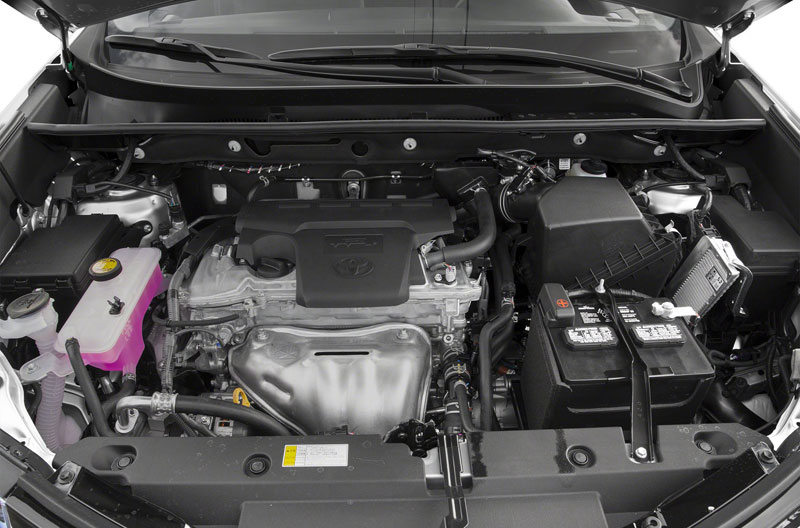
Although the 2017 lineup was limited to only gasoline versions. Front-wheel drive and all-wheel drive modifications with 2 liter engine are represented by two types of gearboxes: 6-speed mechanics and variator. Version with 2.5 liters. offered exclusively with automatic machine.
At Mitsubishi Outlander, everything is a little more modest. The transmission is limited by a variator on all engine types. Motors are presented in 2 types:
- 2.0 l. with a capacity of 146 hp;
- 2.4 l. with 167 "horses".
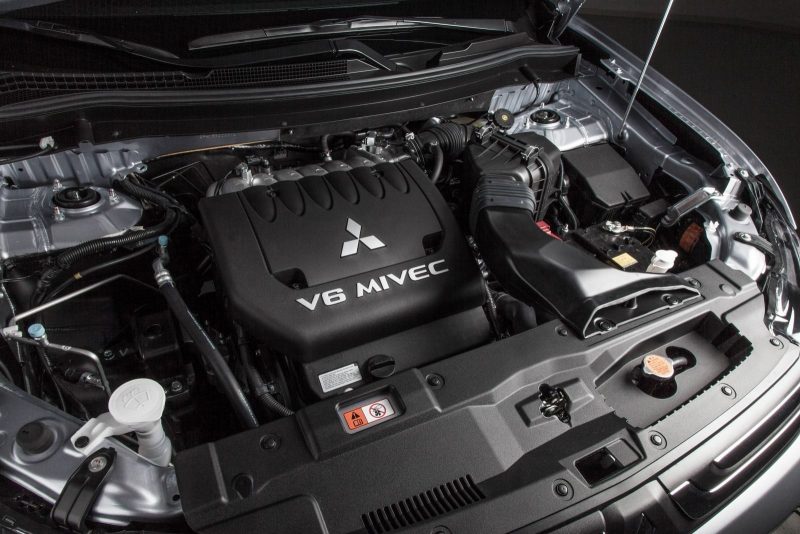
There is no need to explain the advantage of the manual transmission. The mechanics allows you to rock the car, leaving deep bogs and mud. The automatic machine and the variator are more sensitive and do not tolerate slipping. To save the box on both crossovers, there is an anti-slip system. In addition, the automatic transmission in Toyota has a "Sport" mode, which turns off the electronics, and in Mitsubishi, the "L" mode is provided on the variator. After turning it on, the box increases more slowly ratio gears, and it looks like you are driving in the first stage. Thus, you can slowly but surely overcome obstacles, while maintaining the transmission.
Technical equipment
In terms of options, the cars are about the same. Moreover, both old and new versions. Before restyling, the Rav 4 in 2012 did not have a lot of functions. For example, the all-round vision system, which is a Nissan chip, was not available. But the 2016 model has this option. This system allows the driver to see everything that happens around the car in 360 degrees. Cameras located along the perimeter monitor the situation, and the computer glues the fragments together and displays the whole picture on the monitor screen.
In Outlander, most of the options appeared only a year ago. Even the restyled 2014 version didn't have many electronic systems... Today, both crossovers have sensors that signal that the car is in the blind spots, and a system of all-round visibility, and a system that notifies of an object crossing your trajectory when reversing. Also in cars there is an automatic braking system in the presence of an obstacle at a close distance, but this option is available only in more expensive versions.
Standard options include a clutch lock, stability control and parking sensors. In the maximum configuration, crossovers also have a function automatic switching light from low to high.
Controllability
The first thing that catches your eye when driving the Outlander is the rubber steering wheel. Recoil is weak, return is uncorrected, and in the upright position wheel dangles incomprehensibly. There is no rigidity at all, the car constantly has to be balanced, and this is annoying. With minor jerks to the sides of the steering wheel, the car does not wobble, like Rav4, but sway. This indicates insufficient steering wheel response. Mitsubishi has always been distinguished by mischief, so this driving style can appeal to drivers who need constant adrenaline, and to control a car that is not characterized by stability and clarity is a joy to them.
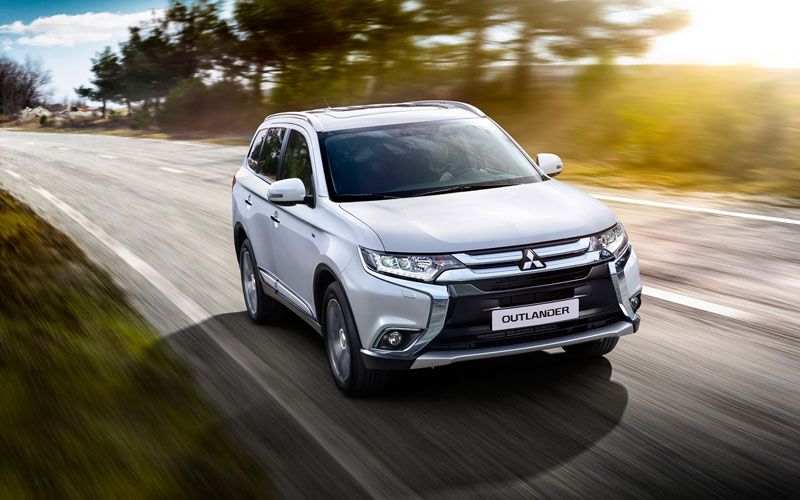
As a clear plus of the Outlander, the softness of the suspension can be noted. The engineers have done a great job to make the driver and passengers feel as comfortable as possible. Swaying gently, the car overcomes both minor and serious irregularities.
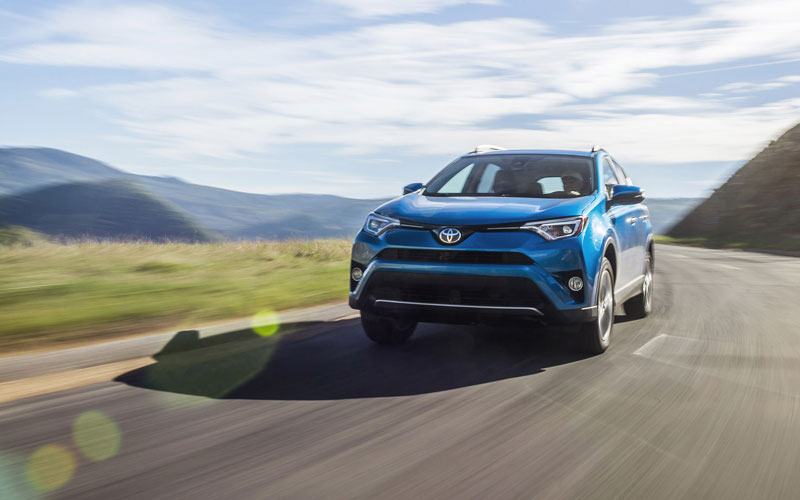
The opponent has a stiffer steering wheel that responds well to the slightest movement and has excellent feedback... It is clearly fixed, but to a certain extent it may seem too rigid. The steering wheel has no blind spots and, unlike the competitor, does not provide the driver with unexpected surprises. The obvious drawback of Rav 4 is the suspension. Compared to the 2012 pre-styling version, it has become softer, although small bumps and ripples on the road are still very noticeable. Large pits and potholes are overcome flawlessly, but a trifle clearly hits the passengers. In the Outlander, everything is perceived softer: the suspension, and the pedals, and the steering wheel. But such softness does not allow you to relax, but constantly keeps you in good shape, recalling the playful nature of the car with a claim to a sporty driving style.
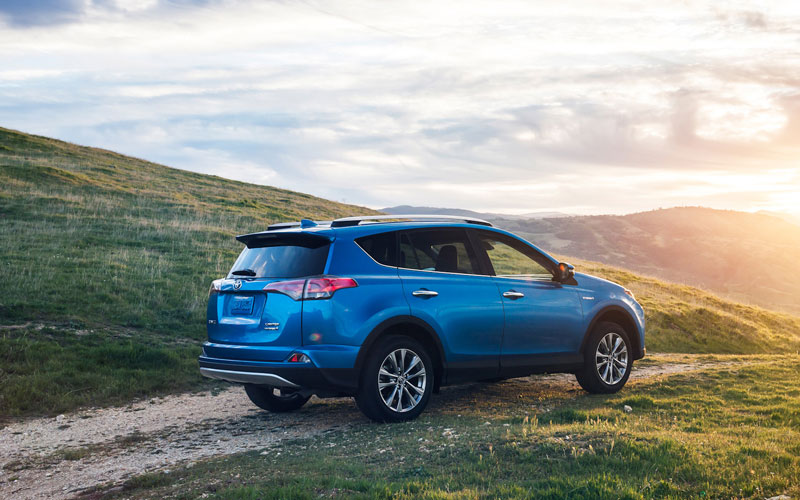
The stability control system in both crossovers works flawlessly. It, if necessary, reduces the engine speed and corrects the trajectory of the wheels, preventing skidding and warning the driver against rash actions. However, by disabling this option, both cars turn into wild cats. It is noteworthy that disabling the stabilization function in Outlander is easier. It is important to remember that before frolic on the ice it is worth switching the Mitsubishi variator to the "Ds" position, and the Toyota automatic transmission to the "Sport" mode.
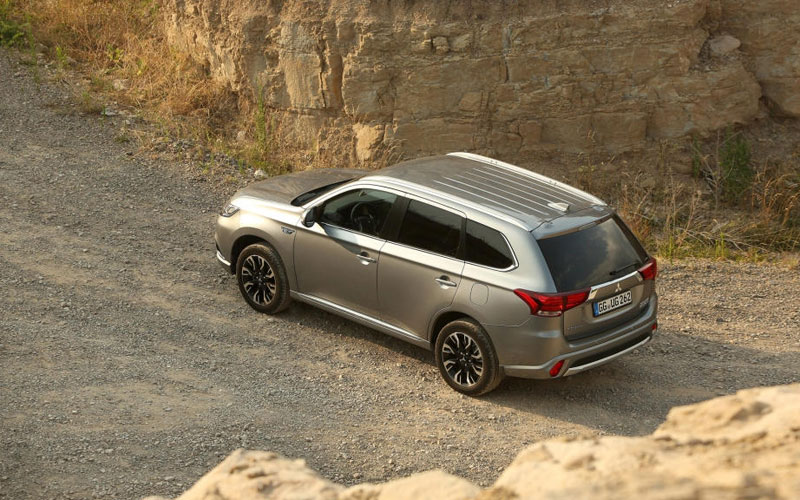
When all available options are connected, including clutch lock, stabilization system and traction control both cars show roughly the same off-road capabilities. The downhill descent system, with the help of which the car independently brakes, works on the Rav4 both with the front and backward... In this case, the point for the passability can be given to both participants.
Prices
Comparing the price tags, Mitsubishi wins, and this is quite expected. Toyota has always had a higher value in the class for build quality and reputation earned over the years. Basic configuration Rav 4 with a 2.0 liter engine. 6-speed "mechanics" and front-wheel drive costs 1,493,000 rubles. The initial version of Mitsubishi with the same front-wheel drive, CVT and 2.0 liter engine. costs about the same - 1,499,000 rubles. This is the cost lineup 2017 At the moment, authorized dealer you can purchase the 2016 version for 1,399,000 rubles. But in the maximum all-wheel drive configurations with 2.4 and 2.5 liter engines. there is a tangible difference - the 2017 models cost 2,109,990 rubles. from Outlander and 2,209,000 rubles. at Rav 4.
Summing up
In the battle of Rav4 vs Outlander, it is difficult to determine the clear winner. Rafik is tougher and more stable in management, while his rival is soft and cocky. The first car will definitely suit respectable drivers who value comfort, optionality and want to emphasize their status. Absolutely everything hints at prestige in Toyota. Outlander, in turn, attracts younger, hot blooded clients. They will love the wayward character of Mitsubishi.
The cross-country ability and practicality of the machines are also at a similar level. Its useful to note, more comfort for passengers with Toyota and more soft suspension at Mitsubishi. In terms of the trunk, there is no clear favorite, since the leader is determined by the choice of equipment. Other points, such as design, choice of finishing materials and type of gearbox, are a matter of taste. Have Rav 4 more options engine and transmission, and, it would seem, with an objective examination, Toyota has more advantages. But the cornerstone when choosing a car will always be the price tag. And since in Toyota it is as much as 100 thousand higher, it will no longer be possible to give preference to Rafik.
Each crossover has its own character and style that you will like different types buyers. The main thing is to determine which one you like best! Good luck on the road!
Comparison of cars Rav4 and Mazda CX 5 is one of the favorite amusements of motorists in recent years. Both cars are typical "Japanese", both are reference crossovers, both have similar characteristics and even appearance. All this creates a rich ground for controversy. Let's try to be clear. So, Mazda cx 5 or Toyota Rav 4 - which car is better?
Toyota Rav 4
If you have to compare Toyota Rav 4 vs MazdaCX5, then it is better to start with Toyota, as a more traditional participant in our car market. The first generation Toyota Rav 4 was positioned as a car for young people. That is why the crossover circuit was taken as the basis.
A car that is most comfortable in the city, fast on the highway, on which, however, at any moment you can wave to hell - this approach most closely reflects the philosophy of the youth car from Toyota.
And although the representative of the first generation of the family left the factory assembly line back in 1994, the car retained and developed the general concept, leaving in the past the disadvantages of "childhood diseases".
Engine and chassis
We will agree right away - we will only discuss the configuration options that are officially supplied to the territory of Russia. In the Russian Federation, the Toyota Rav4 crossover comes with two engine options, differing in their volume: 2 and 2.5 liters, with a capacity of 140 and 180 Horse power respectively.
Important! In both cases, the engine is gasoline. Unfortunately, Toyota Rav4 in diesel version is not officially imported to Russia.
The car has permanent four-wheel drive, which is reflected in the name (RecreationActiveVehicle4 - the number means four-wheel drive). Speaking about the chassis of the Toyota Rav4, one cannot fail to note the possibility of blocking the electronic power take-off clutch on rear axle, which almost turns the crossover into an honest SUV. Almost - apart from the rather modest (by the standards of SUVs) engine.
Exterior
Although the design of the car was conceived by the designers as a youth, the first generation of the Rav 4 at first firmly "stuck" the definition - female. And it is not surprising: against the background of the brutal jeeps characteristic of the era of the 90s, the elegant "SUV" looked best case as the little sister of the diesel off-road conqueror.
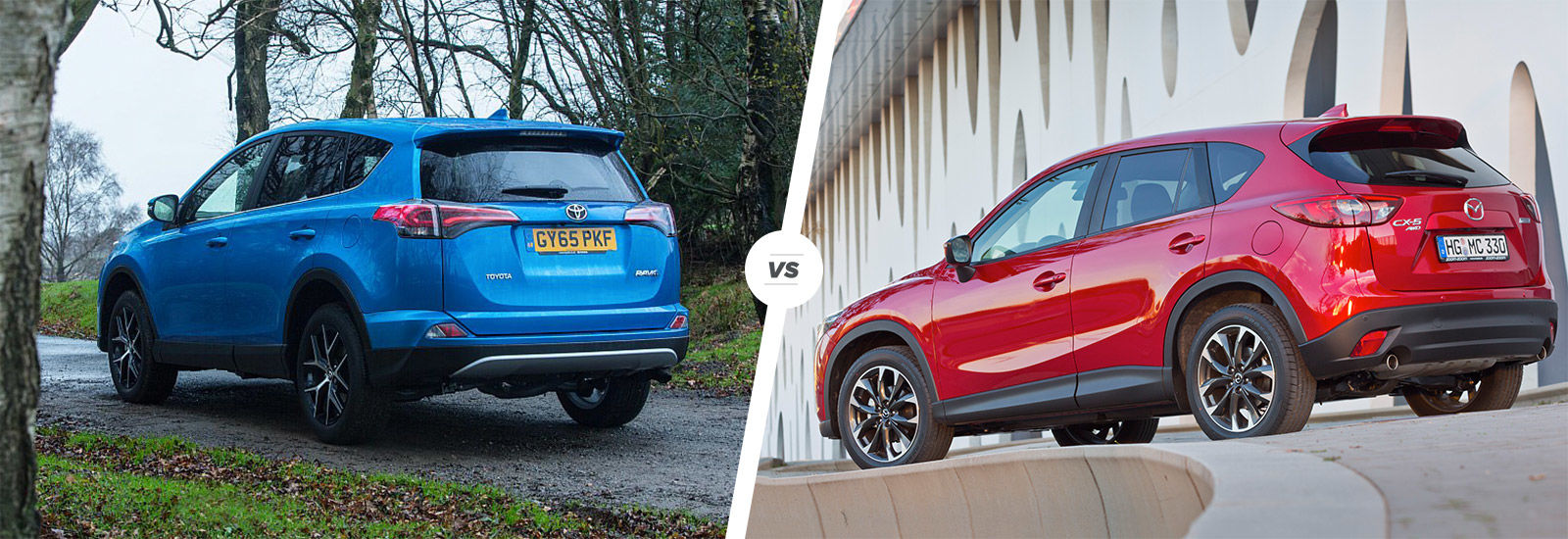
Working on Rav4 2017, the developers decided to radically change the situation - and, I must say, they succeeded. In many ways, this was facilitated by the spirit of the times - the gluttonous four-wheel drive giants, who occupied one and a half parking spaces, if not a thing of the past, then certainly ceased to dominate the city landscape. This is due to fluctuations in fuel prices or an increase in the consciousness of drivers who began to think more about the world around them and the people around them - a topic for a separate discussion. But the fact remains - crossovers are no longer "undersized" among the giants.
Plus, the designers themselves have tried: the more prominent forward bumper Rav4 of the latest generations resembles the powerful chin of a Hollywood superhero. Recessed headlights now look more aggressive. Even too much, according to some. In general, the redesign with the aim of attracting a male audience can be considered a success, as evidenced by the dynamics of sales.
Interior
The interior of Toyota Rav4 - demonstrates the continuation of the exterior ideas: the angular front panel in its entire appearance demonstrates similarities with the land cruisers from the 90s, which were probably once the ultimate dream of the current owners of crossovers.
The interior designers were probably guided by the principle "big boys - more toys", the abundance of controls for various systems, all kinds of "twists", "switches" and "push buttons" is emphasized and protruded in every possible way. The driver's "interface" of the car loudly and confidently declares that the woman's place in this cabin is on the right seat (in the European left-hand drive cabin, of course).
Toyota designers clearly made sure that even a driver of a rather large build felt comfortable behind the wheel of the Rav4. The old-fashioned design of the devices also speaks of the orientation towards a more mature audience. The main message is that Toyota grows and develops together with its owner. A young and promising driver Rav4 1994 became a wealthy and respectable owner of the fourth generation Rav4 2017.
Reference! The basic configuration of ToyotaRav 4 2016 will cost a buyer from Russia 1,459,000 rubles.MazdaCX5
And what can the closest competitor oppose?
The Mazda CX-5 went into production in 2011, a decade and a half after the competitor from Toyota. The car has already been developed taking into account the experience of analogue crossovers, which made it possible to bypass many of the "rakes" that the predecessors had time to step on.
So, the designers managed to reduce the mass of the main components and assemblies without losing functionality. The fact that the car is clearly a success is evidenced by the fact that the Mazda CX-5 became the car of the year in Japan twice in a row - in 2012 and 2013.
Engine and chassis
ToyotaRav4 and Mazda CX5 have the same volumes gasoline engines- 2 and 2.5 liters, but the Mazda CX-5 is presented on Russian market and a 2.2-liter diesel engine. Diesel power - 175 horsepower.
Suspension scheme - permanent four-wheel drive. The responses of the drivers note the excellent work of the torque converter, which allows you to use the "automatic" even off-road.
The European version of the Mazda CX-5 (namely, it is supplied to Russia) is equipped with a rather controversial i-stop system - "intelligent stop", which automatically turns off the engine when the car stops for a long time, for example, in a traffic jam, at a traffic light, a railway crossing.
The i-stop allows you to reduce noise and emissions into the atmosphere, while the engine resource is noticeably wasted, which is not justified by the penny fuel economy. Many attribute the i-stop system to the unambiguous disadvantages of Mazda, although there is no good reason for that - the i-stop can always be turned off.
Exterior
When looking at the silhouette of the CX-5 Mazda, it is impossible not to notice the speed of the car, emphasized by numerous contours. It seems that the shape of the body was not given by designers and constructors, but the oncoming air itself "licked" the streamlined profile of liquid metal.
But everything has a downside: thanks to its swift forms, the crossover from Mazda seems to be relatively more compact and low, which may not please convinced "jeep drivers" for whom the car is an indicator of status and significance.
Interior
The first word that comes to mind when looking at Mazda interior CX-5 2016 - concise. The controls on the driver's panel seem to be kept to a minimum. However, upon closer examination, it becomes clear that the functionality of car control has not suffered in any way, the designers simply did not consider it necessary to flaunt it.
The multimedia screen is recessed into the panel, which, firstly, favorably reflects the style chosen by the designers, and secondly, it protects well from sun glare and glare from other people's headlights.
In general, the interior is more "modern", futuristic, but at the same time respectable than the recognized icon of style in the auto world - BMW.
Reference! A Russian who has decided to become the owner of an official Mazda CX-5 will have to fork out at least 1,349,000 rubles. If you choose for the price, Mazda is your option.
Comparison results of cars in dimensions are presented below:
Toyota rav4 or Mazdacx 5 - which is better? It is difficult to give an unambiguous answer to this question.
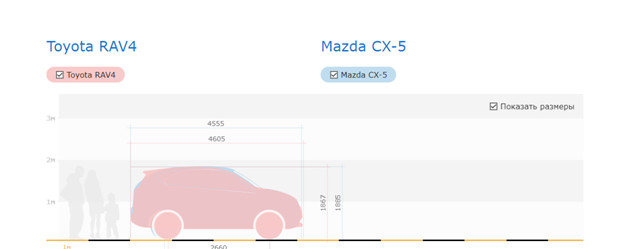
Mazdacx 5 and Toyota rav4 are typical representatives modern class crossovers. If you, in principle, share the philosophy of the car for all occasions, then in any model you will find pros and cons. Well, the final choice is yours!
In opposition to Korean and japanese cars there have always been many ambiguities. Today we will try to solve some of them, since we will compare Kia Sportage and Toyota Rav 4, and in the end we will determine which is better.
History
The Sportage crossover career began back in 1992. The car was built on the basis of the Mazda Bongo module, which already predicted a successful future for it by default. It is interesting that initially the crossover was even offered in the back of a pickup truck. In 2004, the Koreans presented the second generation Sportage, which they immediately began to assemble at a branch in Kaliningrad. The third generation model debuted in 2010, and a few months later, it was recognized as the best for the year in Slovakia.
The latest modification for today - Sportage 4 was presented in 2015 at the Frankfurt Motor Show. It should be noted that the design of the car was recognized as the best in the "Crossover" class.
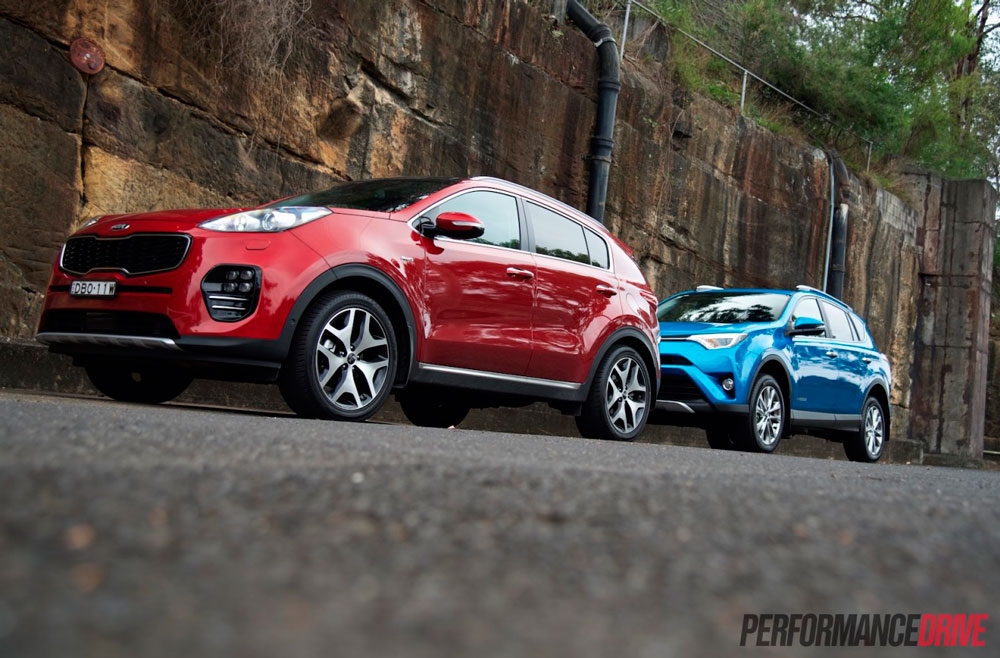
Rav 4 is not far behind in age from his opponent, as he was first shown to the public in 1994. The Japanese crossover has positioned itself as a youth car for outdoor activities. Hence the abbreviation - RAV4, where the last and only number denotes four-wheel drive. Rav 4 of the second generation was introduced in 2000, however, this version failed to gain much popularity, due to a number of shortcomings, which, in turn, were corrected in the third generation of the crossover.
In 2012, the fourth generation Rav 4 was presented in Los Angeles, which immediately broke all the sales records set by its predecessors.
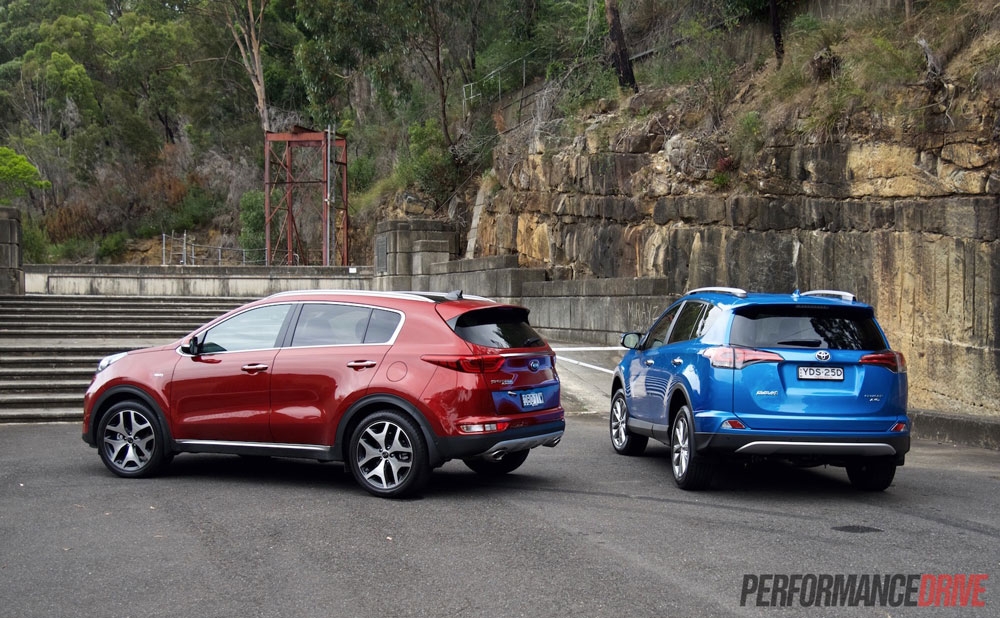
Due to the fact that both crossovers can boast of a fairly long and successful career, in this aspect we will award a draw.
Appearance
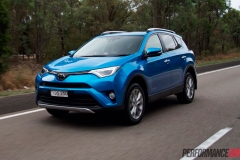
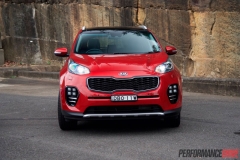
In the exterior of cars, you can notice a lot in common. This is especially true of the profile and stern of crossovers, but the front of each model is made differently. If in Rav 4 you can observe a pointed and sporty front end, then in Sportage it looks more aggressive and massive. However, according to experts, thanks to the features of the front end of the body, the Rav 4 has better aerodynamics.
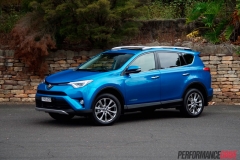
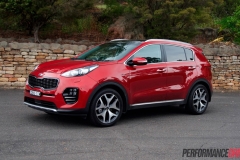
But the side part, as mentioned above, is very similar for both cars. This is a smooth sloping roof, wide doors, and voluminous wheel arches. Unless the Sportage has a shallow side stamping.

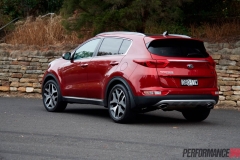
There are also many similarities at the back. This is, first of all, the same visor, and a wide rear window. But the shape and dimensions of the boot lid are different for both cars.
Salon
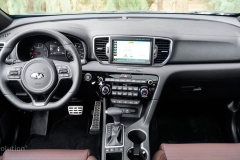
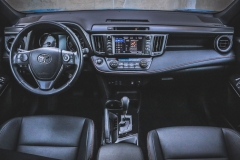
The interiors of the cars are made in the style inherent in most Asian models. Here it is impossible to notice European pretentiousness and pathos, as well as the presence of various unnecessary "bells and whistles". For example, in Rav4 dashboard consists of a small screen as well as a simple audio and climate system. At the sportage, the dashboard boasts a more advanced touchscreen display, but, in general, the same simplicity and rigor is visible here. But the steering wheel Rav 4 spoils the overall picture a little, as it looks too simple.
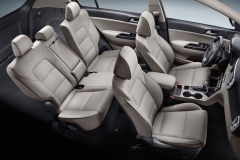
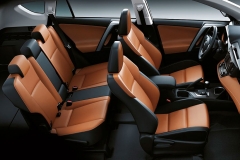
As for the level of finishes, in both cases, inexpensive materials were used for this, and the designers presented them in different ways. If the Koreans managed to squeeze the maximum out of the minimum, then the Japanese developers did not invent anything, and relied on practicality. Also, inside the Sportage there is more free space.
If you make a choice - Toyota Rav4 or Kia sportage, then in terms of the quality of performance and layout of the cabin, the second option looks the best.
Specifications
At this point, let us compare the "stuffing" of cars assembled in 2017, equipped with two-liter gasoline engines that run exclusively on 95th gasoline. Also, an all-wheel drive system is connected to both units. But with the transmission, not everything is so simple. If Rav 4 is equipped with a variator, then it works on 6 automatic transmissions.
It is interesting that the power of the cars is about the same - 150 "horses" against 146, in favor of the Sportage. However, the performance indicators are better for Rav 4. For example, the acceleration time from zero to hundreds is 11.3 s, versus 11.6 s for the Sportage. Also, the Japanese crossover is much more economical than its counterpart - 7.5 liters in the combined cycle, versus 8.3 liters for the opponent.
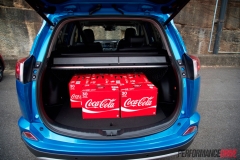
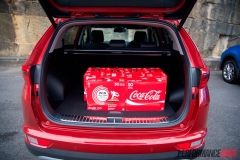
If speak about overall dimensions, then the Rav 4 body is 125 mm longer than the Sportage and 40 mm higher, while the wheelbase is 10 mm less. As for the ground clearance, it is also higher for the "Japanese" - 197 mm, against 182 for the Sportage.
The mass of the Rav 4 is 1690 kg, which is 194 kg more than that of the Sportage. Also, the trunk Japanese crossover more capacious than its today's competitor by 86 liters.
| Model | Kia Sportage 2017 | Toyota Rav4 2017 |
|---|---|---|
| Engines | 1.6, 2.0 | 2.0, 2.5 |
| Type of | gasoline, diesel | petrol |
| Power, h.p. | 150-185 | 146-180 |
| Fuel tank, l | 62 | 60 |
| Transmission | mechanics, automatic, variator | mechanics, automatic, variator |
| Acceleration to 100 km, s | 9.1-11.6 | 9.4-11.1 |
| Maximum speed | 181-191 | 180 |
| Fuel consumption city / highway / mixed | 10.9/6.6/8.3 | 9.4/6.3/7.4 |
| Wheelbase, mm | 2670 | 2660 |
| Ground clearance, mm | 182 | 197 |
| Dimensions, mm length x width x height | 4480 x 1855 x 1645 | 4605 x 1845 x 1685 |
| Weight, kg | 1474-1615 | 1540-1705 |
Price
The average cost of a Toyota Rav 4 2017 today is approximately 1,500,000 rubles. You need to pay about 1,150,000 rubles.



